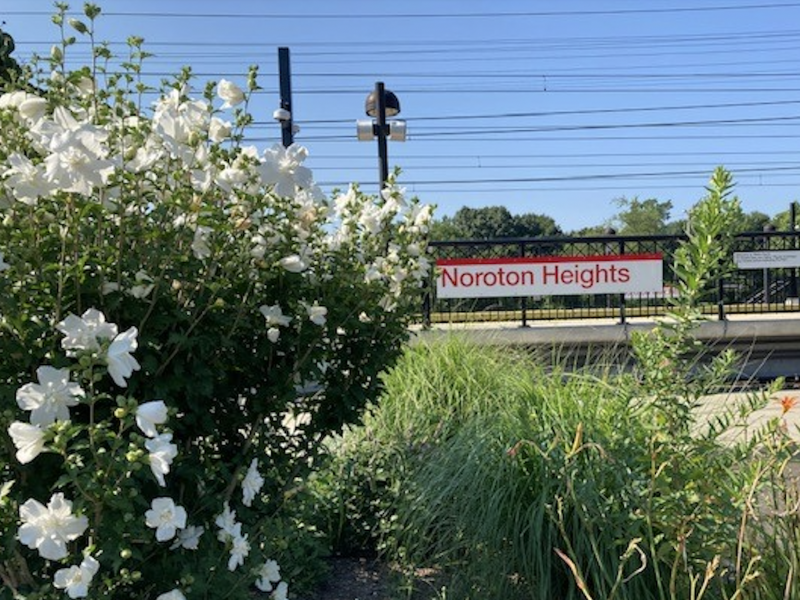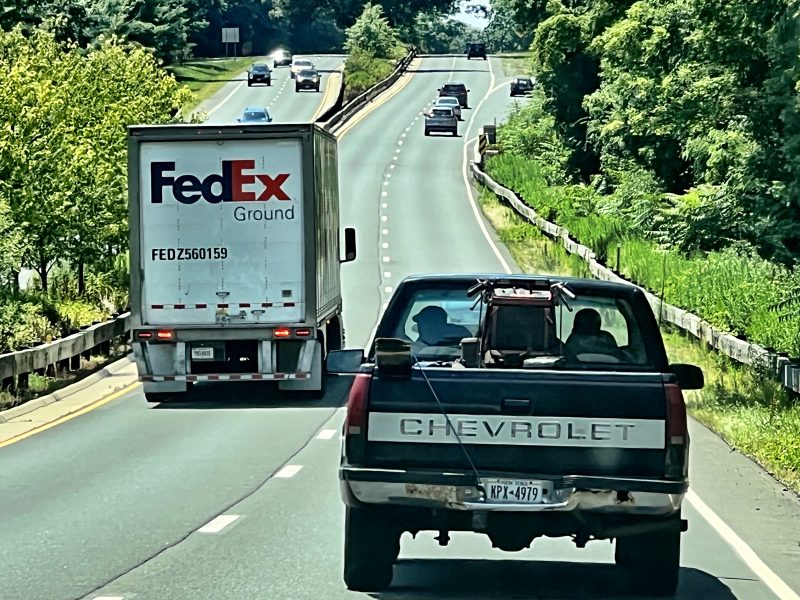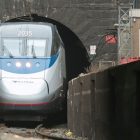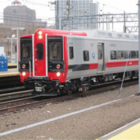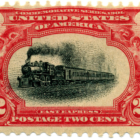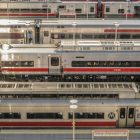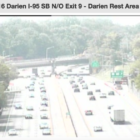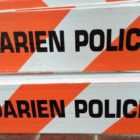Every train journey, whether a cross-country adventure on Amtrak or a mundane daily commute on Metro-North, starts with the same thing: a train station. Consider Grand Central (Terminal, not Station). The architecture is so rich, the spaces so varied, that any time spent in this cathedral to transportation is time well spent. You can have a sit-down meal or grab a beer and a sandwich, pick up a newspaper, or a new iPhone — it’s all there. GCT is clean (mostly), well patrolled and filled with people, each giving the others a shared sense of safety and community.
Talking Transportation 2022
Decrepit, at Risk: No Way for Weakest Yet Most Crucial Northeast Transportation Link to Go Through Life
|
It should have been done by now. 2018 was the expected completion date of the new railroad tunnels under the Hudson River, first proposed in 2009. At that time the $9 billion project was the biggest infrastructure project in the country. Now it may finally happen. Why do rail tunnels from New York’s Penn Station to New Jersey matter to us here in Connecticut?
Talking Transportation 2022
Talking Transportation: Progress Around the Edges of Metro-North, Not Much at the Heart of It
|
Yes, there are new trains on the Waterbury branch — and three new express trains from New Haven, but overall our rail service in Connecticut is still too slow. Why? Governor Lamont and CDOT Commissioner Guilietti ballyhooed their new train PR last week as if they’d solved the commuting problem. They have not. Still, kudos to Commuter Council Chair and Waterbury branch rider Jim Gildea for his tireless efforts to build up service on that branch line.
Cameron on Transportation
It Can Happen on Trains: ‘We Were Crashing. The Sound of My Own Scream is the Last Thing I Remember’
|
When we get on an airplane we buckle up, read the safety card and are given a demonstration on the oxygen masks and emergency exits. Those things can save lives should something go wrong. But when we get on a train, either Metro-North or Amtrak, we settle into our seat and zone out. We assume we’re safe. That’s what passengers on an Amtrak train in Missouri thought this past week… until their train’s locomotive hit a dump truck on an unguarded private grade crossing and derailed.
Cameron on Transportation
Talking Transportation: Taking Reader’s Comments From the ‘Mailbag’
|
I love getting feedback from you, my faithful readers. So I thought I’d share some recent comments. Last week I wrote about the railroads’ history of naming their best trains and stations. One reader, CL, reminded me that Metro-North names its express train to Yankee stadium “The Yankee Clipper”, a nice homage to baseball great Joe DiMaggio. Another reader, BW, wrote “In Ireland, all the inter-city trains have names; they are named after Ireland’s rivers.” That’s classy.
Cameron on Transportation 2022
Where Do You (Legally) Buy Pot Around Here? Well, You Don’t. Not Just Yet. You’ve Got to Hit the Road.
|
Connecticut is investing $3 million in a new ad campaign to promote tourism in our state. But here’s a theme you won’t hear mentioned — yet. “Whether you simply wander or plunge into the surf, cannabis can add pleasure to your beach visit.”
Such was the promise on a Mystic-based private tourism website, VisitNewEngland.com talking about Massachusetts beaches. But the site’s flowery pot prose also goes on to describe some of our tourism haunts that can be enhanced by marijuana. “If you’re the type of weed smoker who loves to think deep, pondering thoughts about space and time, you’re in luck: Connecticut is home to some of the nation’s oldest historic houses, buildings, and towns.” According to state figures there are over 52,000 registered medical marijuana users in Connecticut.
Talking Transportation 2022
Why Wi-Fi Finally Is Coming to a Train Near You, Right on Time to Be Obsolete
|
Airplanes have Wi-Fi. Even Connecticut’s CTfastrak commuter bus system from New Britain to Hartford gives its passengers free Wi-Fi. Commuter railroads across the US offer Wi-Fi, including Boston’s MBTA. Wi-Fi is everywhere — but not on Metro-North. So the Connecticut legislature has just budgeted $23 million to install 5G technology on the railroad’s M8 cars.
Hindley Happening 2022
Police: Expect Heavy Traffic Happening near Hindley School’s Hindley Happening
|
This Saturday, May 7, from 10 a.m. to 6 p.m., the Hindley Happening fair will be — gotta say it: happening — at Hindley School at the corner of Nearwater Lane and the Post Road in Noroton. Expect heavy traffic, Darien police are reminding drivers. “There will be extremely limited parking availability due to this event and other private events taking place in Noroton Center,” said a police announcement on Friday. “Please plan ahead for traffic delays or seek alternate routes. Thank you for your cooperation.” For more about what’s happening at the Hindley Happening: The Hindley Happening Is Happening May 7
Cameron on Transportation
Talking Transportation: Leaders Take A Step Forward, A Step Back — The Dance of the Sugar Plum Ferries
|
As our Connecticut legislators wrap up their “short session” this week, it’s time to assess their work: things accomplished, mixed messages sent and issues left unresolved. Transportation is responsible for almost 30% of all air pollution in the U.S., more than half of that spewed by cars and trucks. The EPA says Connecticut is in “severe noncompliance” with Federal clean air rules, especially Fairfield, New Haven and Middlesex counties. Our air literally stinks. So while I’m happy the state has finally committed to a Clean Air Act, it will take until 2040 for many of its provisions to take effect.
Talking Transportation 2022
If State Employees Were Overpaid, They Wouldn’t Be Leaving for Better-Paying Jobs in the Private Sector
|
Are Connecticut state workers overpaid? I don’t think so. Connecticut state employees are about to get a retroactive, four-year contract that gives them a $3,500 bonus, annual 2.5% pay increases and their “step increases” tied to seniority and their jobs. By one estimate, this all works out to an additional $10,000 per worker over four years. Total cost to taxpayers: $1.86 billion.
Transportation
Upgraded Traffic Cameras, Monitors, Communication System Coming on Interstate 95, U.S. Rt 7
|
The Connecticut Department of Transportation is developing plans to upgrade and expand closed-circuit television cameras, traffic flow monitors and communication upgrades on Interstate 95 and Route 7 in Fairfield County. — an announcement from the Connecticut General Assembly
The traffic monitoring technology watches Connecticut highways to allow rapid response to any incidents affecting safety. “If our first responders have more resources to use in place, they will be able to respond to an emergency situation quickly and efficiently,” said state Sen. Pat Billie Miller, who represents Stamford and Darien. The project in question will involve the upgrade and expansion of existing camera networks for up-to-date traffic conditions and travel times to emergency responders, the media and motorists. Existing fiber-optic cable and cameras on I-95 will be replaced; new ones will be installed along Route 7, with further work including the installation of traffic flow monitors and communication equipment.
Talking Transportation 2022
Metro-North’s Ongoing Failure to Enforce the Federal COVID-19 Mask Mandate
|
I love getting email, especially from frustrated Metro-North commuters. Consider this thoughtful email I received a week ago from a six-day-a-week rider, Scott Mikita, who works on Broadway:
“I am actually on a train into work right now and Googled ‘Metro North conductor claims he can’t enforce mask mandate’ and your article from September 2021 popped up. I take 12 train rides per week and have seen ridership increase since coming back to work in September 2021. I have also noticed that trains are often shorter than before and some conductors reluctant to open empty cars, even on busy, crowded trains. “Just now, I asked the conductor if the mask mandate is still in effect (there is a couple sitting on the train, maskless) and he said yes, but that he ‘couldn’t enforce it.’
Business
Access Blocked at Corbin Dr and Post Rd Weekdays Starting Tuesday, Expected to Last Two Weeks
|
Corbin Drive will be blocked weekdays from 7 a.m. to 4 p.m., starting Tuesday, April 12 and continuing each day until there’s no further need for it, Darien police announced Monday. Construction of the first stage of The Corbin District is the reason. UPDATE: The construction phase requiring the blocked access is expected to take 10 business days, weather permitting, said David Genovese, the CEO of Baywater Properties and the principal developer of The Corbin Project. “Vehicles needing to access Corbin Drive will be detoured to Center Street, to Old King’s Highway South, to the eastern end of Corbin Drive,” the announcement said. “Businesses, including the Post Office, will be open and accessible using the construction.”
Cameron on Transportation
At New Jersey Gas Stations, Attendants Will Serve Your Fuel: It’s the Law
|
You can pump your own soft-serve ice cream at trendy yogurt shoppes. But you still can’t pump your own gasoline in New Jersey. Why? Once again, lawmakers in Trenton have killed an effort to save motorists money at the pump, allegedly in the name of safety. Self-serve gasoline has been allowed across the country for 73 years, ever since the first pump-your-own gas station opened in California in 1947.
Opinion
CT Gas Tax Cut Shows the Mediocrity of Our State Legislature
|
Attention all chiropractors and physical therapists! Please report immediately to the state Capitol to treat the sore muscles of lawmakers who’ve twisted themselves into a pretzel, patting themselves on their backs for cutting the gasoline tax! What a surprise (in an election year) that lawmakers voted unanimously to cut the gasoline tax 25 cents a gallon from April 1 to June 30. What a massive sense of relief for money-short taxpayers to save — what? — $25 per car this spring.
Public Safety
On Friday, March 18 Corbin Drive Yet Again Closed to Traffic From Post Road, 9 AM to 3 PM
|
Construction activity for the Corbin District project is again closing Corbin Drive to traffic from the Post Road, this time on Friday, March 18, from 9 a.m. to 3 p.m., Darien police announced. “Vehicles needing to access Corbin Drive will be detoured to Center Street, to Old King’s Highway South, to the eastern end of Corbin Drive,” the announcement said. “Businesses, including the Post Office, will be open and accessible using the construction.” “Darien Police Department staff will be in the area in order to facilitate the safe and efficient flow of traffic. A large presence of construction vehicles, most notably concrete trucks, will be in the area during this time. Motorists not needing to access the area should consider alternate routes to their destination.”



